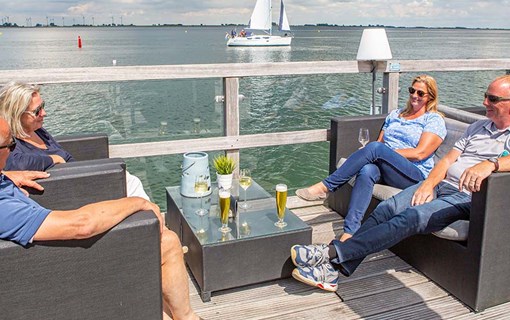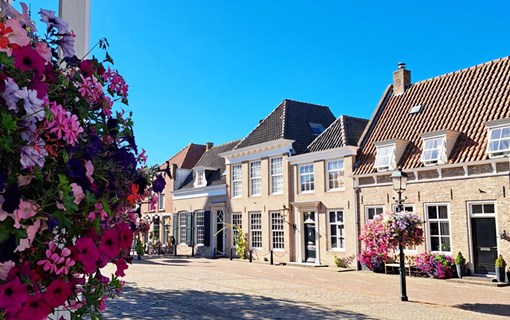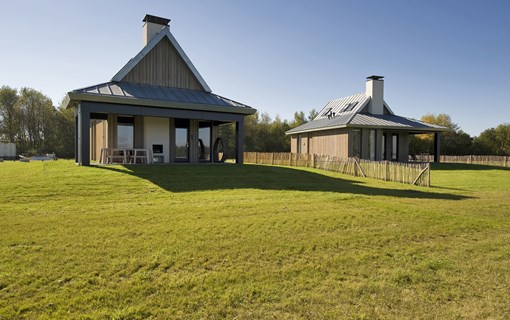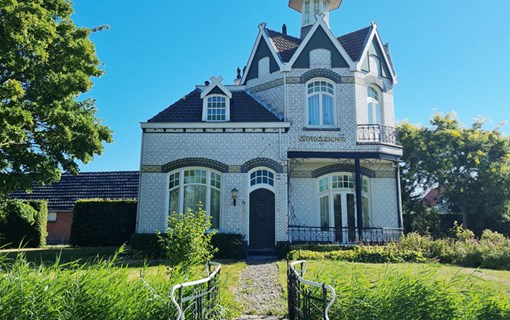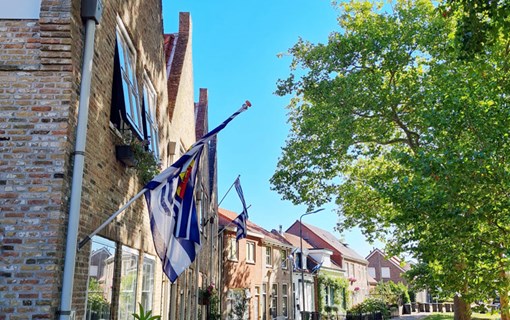
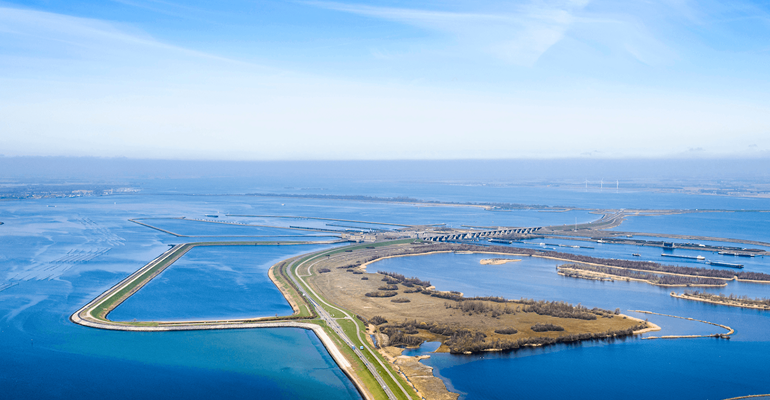
Tholen and Sint Philipsland
History
The oldest traces of habitation found in this area date from around the beginning of our era. At an excavation site east of Poortvliet, traces of habitation have been found two metres below ground level. Much later signs of habitation, from around 1015, have also been found in the area around Scherpenisse. In 1014 and 1134, terrible storms ravaged the coast. These and other storm surges gave rise to mounds (‘terpen’) and the construction of dikes. Of the 12 terpen or ‘refuge mounds’ that were once part of Tholen, only the Westkerkseberg at Scherpenisse remains. The others have been excavated.
In the Middle Ages, some islets here were joined together by the diking of intermediate trenches. The last major trench, the Pluimpot, divided Tholen into eastern and western halves; it was dammed in two places in 1556. A remnant of this waterway, which Scherpenisse and Sint-Maartensdijk made available to ships, was used into the 20th century. It was only closed in 1957 because of an unsafe link to the seawall. The resulting Pluimpot Polder (50 ha) was the last major land reclamation in Tholen.
In addition to land gains there have also been losses, especially on the south side of Scherpenisse. Repeated storms created surges that broke through dikes on multiple polders. During the North Sea flood of 1953, more than half of Tholen was flooded by sea water. In the small town of Stavenisse, 153 people were killed by the flood. The material damage was also enormous. The statue ‘Het Zeemonster’ (‘The Sea Monster’), located on the Provincialeweg between Sint-Maartensdijk and Stavenisse, commemorates the flood.
Villages and towns
The villages of Sint-Maartensdijk and Scherpenisse have a special relationship with the Dutch royal family. Since his accession to the throne in 2013, King Willem-Alexander has carried the title ‘Lord of Sint-Maartensdijk’.
The forefathers of American presidents Theodore and Franklin Delano Roosevelt are thought to have come from the village of Oud-Vossemeer. The Roosevelts visited the village several times in the 20th century.
The town of Tholen sits on the eastern border of Zeeland and should not be missed when visiting the province. The historic parts are still largely surrounded by walls and fortifications. The iconic Church of Our Lady proudly overlooks it all.
